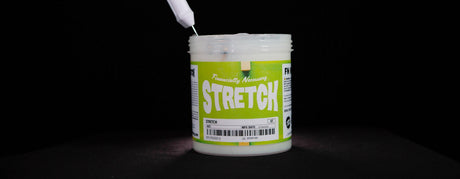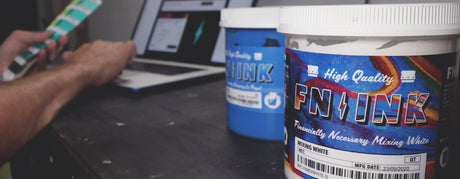
Don’t Worry, Be Stretchy: Introducing FN-INK™ Stretch Plastisol Ink
Once in a while, you may receive an order where the print needs to be real flexible like it can stretch far without falling apart. All ink can stretch, to...
Free Shipping in the Con. US Learn More

Once in a while, you may receive an order where the print needs to be real flexible like it can stretch far without falling apart. All ink can stretch, to...

Have you ever grabbed a bucket of ink off the shelf and opened it up to realize that you don’t have enough to complete a job you’re working on? Yeah,...

If you’ve worked with thick inks, you know it can be hard to print enough ink through the screen to get a decent print. Sometimes, modulating the ink only goes...

Fountain prints are a great way to get a little creative with your inks. You can make a personalized, unique design without using multiple screens. The great thing about fountain...

Wet-on-wet printing can save printers a ton of time since they do not have to wait on the flash. However, wet-on-wet printing is a technique that isn’t mastered overnight. You...

Been looking at FN-INK™? Did you just get it? You probably have a million questions about the plastisol ink: what’s different, best practices for using it, and more. Well, fasten your...

Plastisol ink is a popular ink choice. From beginner to auto shops, plastisol ink is a game changer. But do you know when it’s really ready to use? Do you...

Take a stand against dye migration with FN-INK™ Barrier Black. It’s a specially made ink designed to stop dye migration on polyester garments from the ground up. Print guru Josh Wells...

Have you ever printed a color, checked the print, and noticed it turned out different than you expected? That is called color shift. It will happen with every ink you...

Print shops all over the world debate whether water-based ink or plastisol ink is the better option. There are advantages and drawbacks to both types of ink. The ink you...

By now you’ve all heard of or gotten your hands on FN-INK™. It’s a low-cure plastisol ink that prints like a dream and doesn’t hurt your wallet. All inks are different,...

Is it really necessary to have a mixing white? What’s the difference between a mixing white ink and regular white plastisol ink? Can you use a regular white to mix inks?...

A handful of screen printers start out using water-based ink. For some hobbyists and DIY printers, it’s a more forgiving ink to learn the ropes with (for some, others find plastisol...